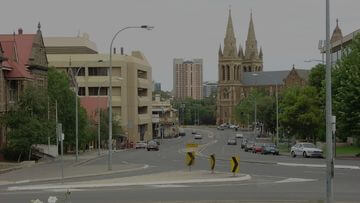On Tuesday 25 October 2022, Treasurer Jim Chalmers handed down the 2022-23 October Federal Budget, his first Budget. While a Budget was handed down on 29 March 2022, this second Budget for 2022-23 updates economic forecasts and outlines the new Labor Government’s priorities following the May 2022 Federal Election.
The good news for the economy as highlighted in the Budget is that the Treasurer believes that inflation will drop from an average of 5.75% this year to 3.5% and 2.5% in 2025. This should slow down interest rates by the second half of 2023. This slowing down is necessary (inflation is one of the reasons why we’ve had a run of interest rate increases) but it will also mean that cost of living will continue to rise, especially energy which is expected to increase by 56%.
It’s also why tax cuts have been ruled out for the next couple of years because the Government can’t risk adding more dollars to your pockets which you might spend and add to inflation.
Table of Contents
Budget outline for businesses
Whilst the October Budget is tax light when it comes to initiatives around individuals and small businesses, there is a focus on tax compliance, rising energy costs and the mental health and well-being of small business owners.
Collecting ATO revenue will be a focus
The Government will be seeking to increase receipts with a focus on tax compliance, and have committed to:
- Extending funding for the ATO Shadow Economy Program for a further 3 years from 1 July 2023.
- Increasing funding for the ATO Tax Avoidance Taskforce by around $200 million per year over four years from 1 July 2022. This will support the ATO to pursue new priority areas of observed business tax risks, complementing the ongoing focus on multinational enterprises and large public and private businesses.
- Providing $30.4 million to the Tax Practitioners Board (TPB) to increase compliance investigations into high-risk tax practitioners and unregistered preparers over four years from 1 July 2023. The funding will support the TPB to use new risk engines to better identify tax practitioners who engage in poor and unlawful tax advice, improve tax compliance and raise industry standards. The estimated revenue receipts from this measure are estimated to be $81.9 million.
Intangible assets depreciation
- Reversal of previously announced option to self-assess effective life for certain intangible assets (e.g., intellectual property and in-house software).
- The effective lives of such assets will continue to be set by statute.
Investing in the energy efficiency of small and medium-sized businesses
- The Government is responding to rising energy costs by committing $62.6 million to support small and medium-sized businesses in improving their energy efficiency and reducing energy use.
- These grants will empower small and medium-sized businesses to invest in cost-saving, energy-efficient upgrades that will put downward pressure on power bills.
Supporting small business well-being
The Government is providing $15.1 million to extend the tailored small business mental health and financial counselling programs:
- NewAccess for Small Business Owners and,
- The Small Business Debt Helpline.
These programs have assisted many small businesses through the challenges of COVID-19 and recent natural disasters.
Better access to training and skills
The Budget states the Government’s commitment to ensuring Australia has the right skills to support our economy and drive future growth. This includes responsibly using migration to ease current critical skill and labour shortages, which have been impacting the everyday lives of Australians.
Digital and Tech Skills Compact
Implemented in partnership with businesses, unions and training providers, the Digital Tech and Skills Compact will deliver digital apprenticeships to support entry-level tech workers to earn while they learn. The Compact will include equity targets for groups traditionally underrepresented in digital and tech fields.
The Government is also supporting new digital career opportunities in the Australian Public Service. Under the APS Digital Traineeship Program, priority groups such as First Nations people will be supported to undertake a Certificate IV qualification in digital or technology-related fields.
Skilled migration
The permanent Migration Program will be expanded to 195,000 in 2022–23. This is an increase of 35,000. More than 90 per cent of new places will be for skilled migrants, and more than a quarter targeted to regional areas.
To address skills shortages more quickly, additional funding of $42.2 million will be provided to accelerate visa processing, reduce the visa backlog and raise awareness of opportunities for high‑skilled migrants in Australia’s permanent Migration Program.
Student and secondary training visa holders will have their work restrictions relaxed until 30 June 2023. This will allow them to work additional hours in any sector, helping to address workforce shortages.
The Government will scale up the aged care training pathway for the Pacific Australia Labour Mobility scheme with an additional 500 places in 2022–23.
Start-up Year program
To help the next generation of Australian entrepreneurs bring their ideas to life, the Government is creating the Start-up Year program. Start-up Year will provide up to 2,000 income contingent loans per year to allow eligible students to participate in a university-based accelerator program.
Budget outline for individuals
While there weren’t a lot of changes in way of individuals, the Budget did mention making the tax system fairer, the LMITO has been fully replaced by the low income tax offset (LITO) and FBT exemption for electric vehicles should be coming.
Making the tax system fairer
The Government is closing tax loopholes to ensure multinationals pay their fair share of tax in Australia and improving integrity through higher levels of tax compliance. This includes:
- A multinational tax integrity package that raises around $1 billion over four years.
- Extending compliance programs for tax avoidance, shadow economy and personal income tax, raising $3.7 billion over four years.
- Working with the international community to reform the international corporate tax system to better address the challenges arising from digitalisation and globalisation.
This change might impact how multinationals approach the Australian market for investments.
Low income tax offsets
The 2022-23 October Budget did not announce any extension of the low and middle income tax offset (LMITO) to the 2022-23 income year. The LMITO has now ceased and been fully replaced by the low income tax offset (LITO).
Electric car discount
From 1 July 2022 battery, hydrogen and hybrid electrics should be exempt from FBT and import tariffs where they cost less than the luxury car tax. Read more about this FBT exemption here.
Building disaster resilience and preparedness
Supporting communities to bounce back from disasters and prepare for future events. In recent years, Australia has been hit by drought, floods and bushfires that have tested our resilience and solidarity. Here’s what the Labor Government propose.
More support for relief and recovery
The Government will always stand ready to support our communities through the immediate impact of disasters and the long road to recovery. Disaster support payments are already providing immediate financial assistance to those impacted by the current floods in New South Wales, Tasmania and Victoria. The Commonwealth will also support the states as they rebuild critical public infrastructure.
There is $3 billion in the contingency reserve to meet the disaster recovery costs from the flooding events this year. Funding will go towards government payments to individuals and help support state efforts to alleviate the immediate hardship being experienced by communities and businesses.
In addition, to support future recovery efforts, the Government is providing $38.3 million to Disaster Relief Australia for more than 5,000 extra volunteers to help communities when disaster strikes.
Disaster readiness
To better prepare for future disasters, the Government will invest up to $200 million per year in prevention and resilience initiatives through the Disaster Ready Fund. The Fund will support projects such as flood levees, sea walls, cyclone shelters, evacuation centres and fire breaks across the country.
The Government is also spending $22.6 million over four years to help reduce the cost of insurance in disaster prone communities. This funding will be used to establish partnerships between the Government and the insurance sector.
Budget outline for home buyers
Australia is facing acute housing pressures and too many Australians do not have access to affordable housing. At the same time, Australia has a low level of institutional housing investment and the world’s third largest pool of capital in our superannuation system which is hungry for investments that will deliver stable returns over the long term.
A target of one million new homes under a national Housing Accord
The Government is bringing states and territories, the Australian Local Government Association, investors, and representatives from the construction sector together under a new national Housing Accord. The Accord sets an aspirational target of one million new, well-located homes to be delivered over five years from mid‑2024 as capacity constraints are expected to ease.
Under the Accord, the Government will provide $350 million over five years, with ongoing availability payments over the longer term, to deliver an additional 10,000 affordable dwellings. States and territories will also support up to an additional 10,000 affordable homes, increasing the dwellings that can be delivered under the Accord to 20,000.
Investing in social and affordable housing
The Accord builds on the Government’s $10 billion investment to establish the Housing Australia Future Fund. Returns from the Fund will be used to build 30,000 new social and affordable dwellings over five years.
The Government is expanding the remit of the National Housing Infrastructure Facility to allow it to more flexibly use $575 million of existing funds. This will help unlock a projected 5,500 new dwellings.
Regional First Home Buyer Guarantee
The Government is helping 10,000 eligible first home buyers a year in regional Australia to buy a home by guaranteeing up to 15 per cent of the purchase price.
Help to Buy
Under Help to Buy, eligible home buyers will have access to an equity contribution to buy a home with a smaller deposit and a smaller mortgage.
Budget outline for superannuation
The Budget proposes changes to the Downsizer Super Scheme and SMSF audits.
Three year audit plan scrapped
A previous proposal had SMSFs being audited every three years, rather than yearly. That plan has been scrapped under this budget
Helping older Australians who want to downsize
The Government is extending the exemption of home sale proceeds from pension asset testing by 12 months and is expanding access to make downsizer contributions to superannuation for people aged 55 to 59. For more information on the Downsizer Super Scheme, check out our blog.
Have questions about how this directly affects your business?
Our accountants, bookkeepers, brokers and financial advisers have been studying the Budget thoroughly so you don’t have to. Get in touch with our team today to learn how we can help.





















